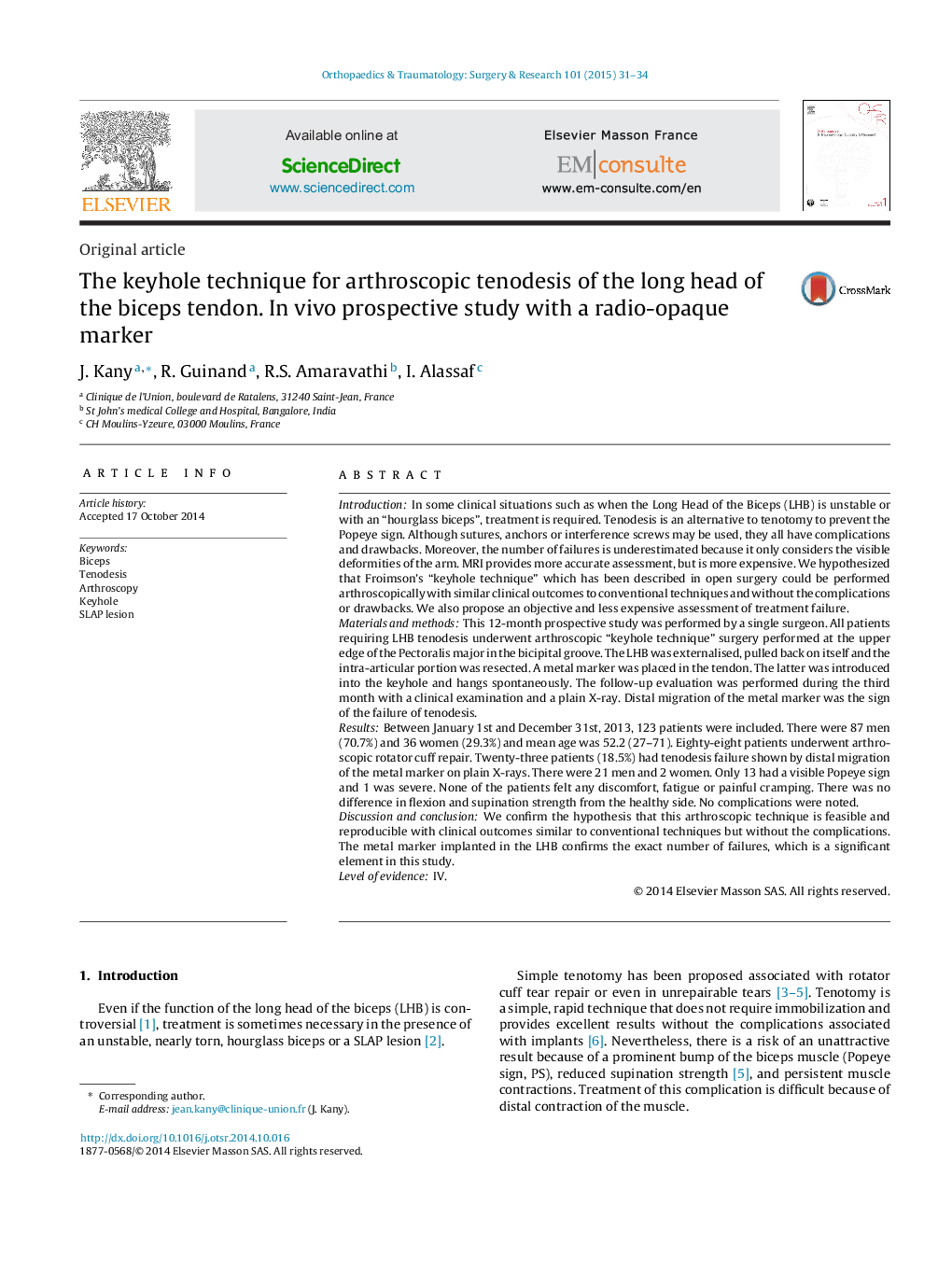| کد مقاله | کد نشریه | سال انتشار | مقاله انگلیسی | نسخه تمام متن |
|---|---|---|---|---|
| 4081229 | 1267584 | 2015 | 4 صفحه PDF | دانلود رایگان |

IntroductionIn some clinical situations such as when the Long Head of the Biceps (LHB) is unstable or with an “hourglass biceps”, treatment is required. Tenodesis is an alternative to tenotomy to prevent the Popeye sign. Although sutures, anchors or interference screws may be used, they all have complications and drawbacks. Moreover, the number of failures is underestimated because it only considers the visible deformities of the arm. MRI provides more accurate assessment, but is more expensive. We hypothesized that Froimson's “keyhole technique” which has been described in open surgery could be performed arthroscopically with similar clinical outcomes to conventional techniques and without the complications or drawbacks. We also propose an objective and less expensive assessment of treatment failure.Materials and methodsThis 12-month prospective study was performed by a single surgeon. All patients requiring LHB tenodesis underwent arthroscopic “keyhole technique” surgery performed at the upper edge of the Pectoralis major in the bicipital groove. The LHB was externalised, pulled back on itself and the intra-articular portion was resected. A metal marker was placed in the tendon. The latter was introduced into the keyhole and hangs spontaneously. The follow-up evaluation was performed during the third month with a clinical examination and a plain X-ray. Distal migration of the metal marker was the sign of the failure of tenodesis.ResultsBetween January 1st and December 31st, 2013, 123 patients were included. There were 87 men (70.7%) and 36 women (29.3%) and mean age was 52.2 (27–71). Eighty-eight patients underwent arthroscopic rotator cuff repair. Twenty-three patients (18.5%) had tenodesis failure shown by distal migration of the metal marker on plain X-rays. There were 21 men and 2 women. Only 13 had a visible Popeye sign and 1 was severe. None of the patients felt any discomfort, fatigue or painful cramping. There was no difference in flexion and supination strength from the healthy side. No complications were noted.Discussion and conclusionWe confirm the hypothesis that this arthroscopic technique is feasible and reproducible with clinical outcomes similar to conventional techniques but without the complications. The metal marker implanted in the LHB confirms the exact number of failures, which is a significant element in this study.Level of evidenceIV.
Journal: Orthopaedics & Traumatology: Surgery & Research - Volume 101, Issue 1, February 2015, Pages 31–34